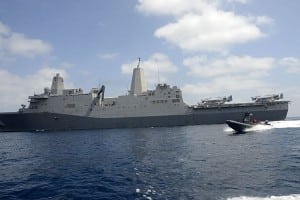
The Navy was the clear winner in the post-Asia-pivot defense authorization bill the House Armed Services Committee released Monday, with the Navy procurement account gaining $1.36 billion – more than all of the Defense Department combined, which had a net gain of only $1.28 billion as a result of steep cuts to the Air Force. The Navy saw several massive add-ins from the committee for projects with clear ties to the Pacific, including $800 million to begin incrementally funding LPD-28.…










